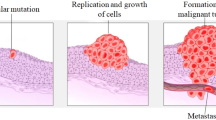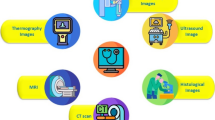Abstract
Breast cancer is frequent among women and its early diagnosis using thermography is not been widely practiced in medical facilities due to its limitation in classification accuracy, sensitivity, and specificity. This research aims to improve the accuracy, sensitivity, and specificity of breast cancer classification in thermal images. The proposed system is composed of the Least Square Support Vector Machine (LSSVM) to improve the classification and prediction accuracy of breast thermography images using optimized hyperparameters. Multi-view breast thermal images are pre-processed using Gaussian Filtering (GF) with a standard deviation value of 1.4 which is followed by anisotropic diffusion while trying to enhance the image by removing noise. Interested regions are segmented by the level-set segmentation technique, and canny edge detection is applied to the segmented output to limit the amount of data and filter useless information. Texture features are extracted from 1370 healthy and 645 sick subjects fetched from Database for Mastology Research (DBR) which is an online free thermogram database. The features from different views of thermograms are later reduced with a t-test. Significant features are added together to obtain feature vector which produces vectors that are further supplied to the Vector Support Machine that utilizes optimized hyper-parameters for the breast thermogram classification. Compared to the state of art solution, the proposed system increased the accuracy by 9% while sensitivity and specificity get increased by 5.75% and 7.25% respectively. The proposed method focuses on modifying the anisotropic diffusion function and enhancing the segmentation of breast thermograms for classification analysis.









Similar content being viewed by others
Data availability
Data sharing not applicable to this article as no datasets were generated or analyzed during the current study.
References
Abdelhafiz D, Yang C, Ammar R, Nabavi S (2019) Deep convolutional neural networks for mammography: advances, challenges and applications. BMC Bioinformatics 20:1–20
Abdel-Nasser M, Moreno A, Puig D (2019) Breast cancer detection in thermal infrared images using representation learning and texture analysis methods. Electronics 8(1):100
Aghazadeh N, Moradi P, Castellano G, Noras P (2022) An automatic MRI brain image segmentation technique using edge–region-based level set. J Supercomput 79(7):7337–7359
Choi S-I, Lee S-S, Choi ST, Shin W-Y (2018) Face recognition using composite features based on discriminant analysis. IEEE Access 6:13663–13670
Das S, Nayak GK, Saba L, Kalra M, Suri JS, Saxena S (2022) An artificial intelligence framework and its bias for brain tumor segmentation: A narrative review”. Comput Biol Med 143:105273
Devi RR, Anandhamala GS (2019) Analysis of breast thermograms using asymmetry in infra-mammary curves. J Med Sys 43:6
Díaz-Cortés M et al (2018) A multi-level thresholding method for breast thermograms analysis using Dragonfly algorithm. Infrared Phys Technol 93:346–361
Figueiredo AAA, Fernandes HC, Guimaraes GU (2018) Experimental approach for breast cancer center estimation using infrared thermography. Infrared Phys Technol 95:100–112
Gogoi UR, Majumdar G, Bhowmik MK, Ghosh AK (2019) Evaluating the efficiency of infrared breast thermography for early breast cancer risk prediction in asymptomatic population. Infrared Phys Technol 99:201–211
Gonçalves C, Leles A, Oliveira L, Guimaraes G, Cunha J, Fernandes H (2019) Machine learning and infrared thermography for breast cancer detection. Proceedings 27(1):45
Gonzalez-Hernandez J-L, Recinella AN, Kandlikar SG, Dabydeen D, Medeiros L, Phatak P (2019) Technology, application and potential of dynamic breast thermography for the detection of breast cancer. Int J Heat Mass Transf 131:558–573
Guirro RRDJ, Vaz MMOL, Neves LMSD, Dibai-Filho AV, Carrara HHA, Guirro ECDO (2017) Accuracy and reliability of infrared thermography in assessment of the breasts of women affected by cancer. J Med Sys 41(5)
Guzmán-Cabrera R, Gonzalez-Parada A, Garcia HE, Guzmán-Sepulveda JR (2016) Evaluation of electromagnetic performance of emerging failures in electrical machines. DEStech Trans Comput Sci Eng, no. cmsam
Hamidpour SSF, Firouzmand M, Navid M, Eghbal M, Alikhassi A (2019) Extraction of vessel structure in thermal images to help early breast cancer detection. Comp Methods Biomech Biomed Eng: Imag Vis 8(1):103–108
He L, Li S, Zhang W (2022) Improvement of Gaussian kernel function for face recognition.” In Third International Conference on Electronics and Communication; Network and Computer Technology (ECNCT 2021) (Vol. 12167, pp. 417–427). SPIE
Jeyanathan JS, Shenbagavalli A, Venkatraman B, Menaka M, Anitha J, Albuquerque VHCD (2019) Analysis of Transform-Based Features on Lateral View Breast Thermograms. Circuits Sys Signal Proc 38(12):5734–5754
Jiang X, Zhang R, Nie S (2012) Image Segmentation Based on Level Set Method. Phys Procedia 33:840–845
Kisi O, Parmar KS (2016) Application of least square support vector machine and multivariate adaptive regression spline models in long term prediction of river water pollution. J Hydrol 534:104–112
Kumar L, Sripada SK, Sureka A, Rath SK (2018) Effective fault prediction model developed using Least Square Support Vector Machine (LSSVM). J Syst Softw 137:686–712
Madhavi V, Thomas CB (2019) Multi-view breast thermogram analysis by fusing texture features. Quant InfraRed Thermogr J 16(1):111–128
Magalhaes C, Vardasca R, Rebelo M, Valenca-Filipe R, Ribeiro M, Mendes J (2019) Distinguishing melanocytic nevi from melanomas using static and dynamic infrared thermal imaging. J Eur Acad Dermatol Venereol 33(9):1700–1705
Maniatopoulos G, Procter R, Llewellyn S, Harvey G, Boyd A (2015) Moving beyond local practice: Reconfiguring the adoption of a breast cancer diagnostic technology. Soc Sci Med 131:98–106
Min SD, Kong Y, Heo J, Nam Y (2017)Thermal infrared image analysis for breast cancer detection. KSII Trans Internet Inf Syst 11(2)
Morales-Cervantes A, Kolosovas-Machuca ES, Guevara E, Reducindo MM, Hernández3 ABB, García MR, González FJ (2018) An automated method for the evaluation of breast cancer using infrared thermography. Excli J
Prabha S, Sujatha C (2018) Proposal of index to estimate breast similarities in thermograms using fuzzy C means and anisotropic diffusion filter based fuzzy C means clustering. Infrared Phys Technol 93:316–325
Radha MRM (2017) Thermal infrared image analysis for breast cancer detection. KSII Trans Internet Inf Syst 11(2)
Sarigoz T, Ertan T, Topuz O, Sevim Y, Cihan Y (2018) Role of digital infrared thermal imaging in the diagnosis of breast mass: A pilot study. Infrared Phys Technol 91:214–219
Sathish D, Kamath S, Prasad K, Kadavigere R (2017) Role of normalization of breast thermogram images and automatic classification of breast cancer. Vis Comput 35(1):57–70
Saxena A, Ng E, Raman V, Hamli MSBM, Moderhak M, Kolacz S, Jankau J (2019) Infrared (IR) thermography-based quantitative parameters to predict the risk of post-operative cancerous breast resection flap necrosis. Infrared Phys Technol 103:103063
Suradi SH, Abdullah KA, Mat Isa NA (2022) Improvement of image enhancement for mammogram images using fuzzy anisotropic diffusion histogram equalisation contrast adaptive limited (fadhecal). Comput Methods Biomech Biomed Eng: Imaging Vis 10(1):67–75
Torres-Galván JC, Guevara E, Kolosovas-Machuca ES, Oceguera-Villanueva A, Flores JL, González FJ (2022) “Deep convolutional neural networks for classifying breast cancer using infrared thermography. Quant InfraRed Thermogr J 19(4):283–294
Tsiotsios C, Petrou M (2013) On the choice of the parameters for anisotropic diffusion in image processing. Pattern Recogn 46(5):1369–1381
Wong D, Gandomkar Z, Lewis S, Reed W, Siviengphanom S, Ekpo E (2023) Do reader characteristics affect diagnostic efficacy in screening mammography? A systematic review. Clin Breast Cancer 23(3):e56–e67
Xu Y, Yuan J (2016) Anisotropic diffusion equation with a new diffusion coefficient for image denoising. Pattern Anal Appl 20(2):579–586
Yao K, Doyama H, Gotoda T, Ishikawa H, Nagahama T, Yokoi C, Oda I, Machida H, Uchita K, Tabuchi M (2014) Diagnostic performance and limitations of magnifying narrow-band imaging in screening endoscopy of early gastric cancer: a prospective multicenter feasibility study. Gastric Cancer 17(4):669–679
Author information
Authors and Affiliations
Corresponding author
Ethics declarations
Conflicts of interests
No Conflicts of interests for this work.
Additional information
Publisher's note
Springer Nature remains neutral with regard to jurisdictional claims in published maps and institutional affiliations.
Rights and permissions
Springer Nature or its licensor (e.g. a society or other partner) holds exclusive rights to this article under a publishing agreement with the author(s) or other rightsholder(s); author self-archiving of the accepted manuscript version of this article is solely governed by the terms of such publishing agreement and applicable law.
About this article
Cite this article
Olota, M., Alsadoon, A., Alsadoon, O.H. et al. Modified anisotropic diffusion and level-set segmentation for breast cancer. Multimed Tools Appl 83, 13503–13525 (2024). https://doi.org/10.1007/s11042-023-16021-5
Received:
Revised:
Accepted:
Published:
Issue Date:
DOI: https://doi.org/10.1007/s11042-023-16021-5




